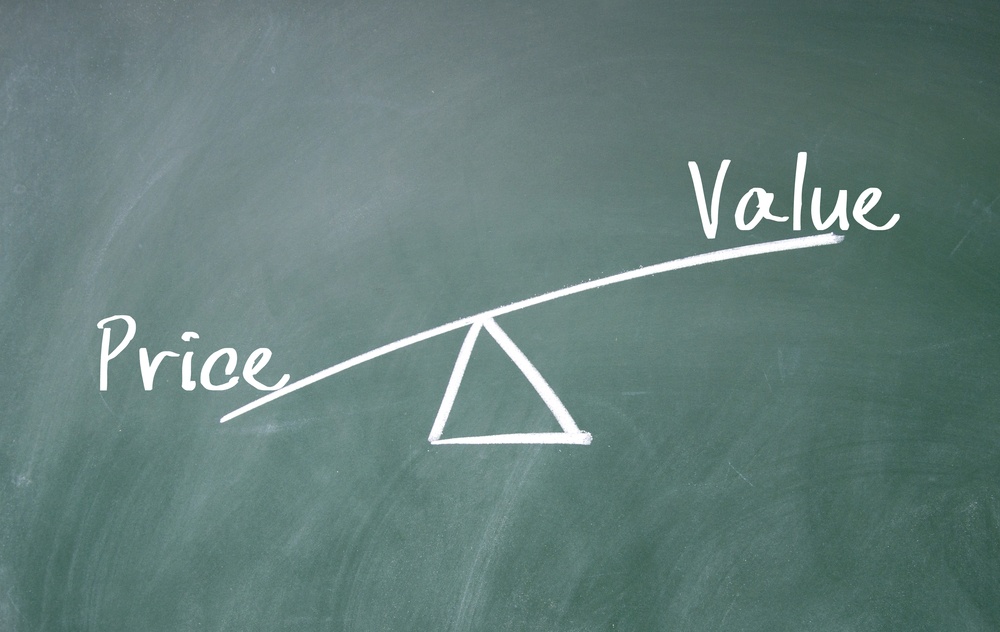For many entrepreneurs, setting a price for your product or service can feel intimidating. Your ability to attract customers, generate sales, and make the business sustainable rides on your pricing. And, it feels like if you don’t get it right from the beginning, your business may never thrive. This week, we’re sharing some tips on how to think about pricing your product or service.
Start with Your Mindset
There can be a lot of fear around setting a price. You might ask yourself, “What if no one wants to buy from me at this price?” It’s helpful to unpack this question and look at how mindset is driving it. If you’re new to running a business or don’t have a track record of selling the product or service as a business owner, you might be telling yourself that you don’t deserve to charge much for it. Or, maybe you’re worried that you won’t ever be able to create a sustainable business. These mindsets can drive you to underprice your products or services and/or chase customers that might not be a good fit for your business. It’s important to look at these negative thoughts and shift your mindset as you get into the technical aspects of setting a price.
Understand Your Customer
Getting to know your customers will help you accurately determine a price for your products. Conducting market research will help you understand their purchasing behavior. In our business accelerators, we recommend starting with empathy interviews, having them tell you about their experiences in finding and evaluating a solution. These stories will give you a sense for their purchasing behaviors. Listen deeply for cues about how they compare prices when evaluating offerings, if they are looking for a bargain or buying on impulse, whether they value quality or quantity, what types of pricing models they are comfortable with, whether they consider the social and environment impact of their purchase, and if they are seeking status in their purchase.
Know Your Market Landscape
Like most new business owners, you are likely entering a market that already exists. As such, you can research how other providers have priced similar offerings. Also, look at what they are offering, how they are offering it, and what customers are saying about their value. Then, compare how you plan to provide your solution. Ask yourself what differentiates your product or service from these other providers. This is your offering’s value proposition. The value proposition has bearing on how you price your offering in comparison to other providers. For example, if you’re offering a higher quality product, you may set a higher price. However, higher quality doesn’t always mean that you want to set a higher price. Let’s say your value proposition is to make a high quality offering more accessible, then you may set a lower price.
Calculate Your Costs
From your research, you may have an idea for a price. The next step is to see if that price will generate enough revenue to cover your costs of doing business. Start by listing out all the costs associated with providing your product or service. These costs usually fall into two categories: (1) variable costs that change when your sales change (e.g., materials, labor, shipping) and (2) fixed costs that are always there regardless of how much you sell. In your calculation, you should account for both your variable and fixed costs for providing the product or service. Also, in the early stages of your business, you may not be getting paid for your labor in providing the product or service – that doesn’t mean it doesn’t exist. Be sure to include the opportunity cost of your time. This is what you could have been making in a job or gig if you weren’t working on this business, or if the compensation from your latest job or gig is not in alignment with your cost of living, look at the compensation needed to meet your cost of living.
Once you have identified the total cost of providing your product or service, then identify how much of a profit you are looking to make off it and add that to the total cost. Be sure to look at the standard profit margins for your industry. Now, see if the sum of the cost and profit margin is aligned with your price assumption from your market analysis. If not, then you may need to revisit your assumed price or your costs of providing the product or service. However, in many cases early on, you will likely offer your product or service at a price lower than your costs as your business isn’t at the scale to receive preferred pricing on raw materials or doesn’t have all the infrastructure set up to efficiently deliver the product or service. In this case, it’s helpful to look at financial scenarios assuming different levels of scale to see what it will take for the product or service to be profitable.
Test Your Pricing
Once you have landed on a price, you should test it. We recommend testing pricing from the earliest stages of your product or service development through a minimum viable product, or MVP. An MVP is the smallest, least time and resource intensive thing you can do or build that will demonstrate the value of your offering. This can be as simple as having a website with a description of the product or service, its value proposition, and pricing, which allows you to collect the number of clicks and sign-ups for the release of the offering at that price. Or, it can be selling a consumer product at a pop-up event and measuring the volume of sales at that price point.
By incorporating price into your MVP, you get feedback on the value of the whole experience of your offering. This feedback will be important as you develop the overall pricing strategy for your product or service.

